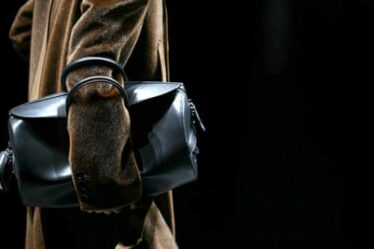

In February, Kering chief executive François-Henri Pinault told investors that the delicate balancing act the French luxury group has tried to perform between furthering its business objectives and limiting its environmental impact was “no longer sufficient” to meet its climate ambitions.
Though Kering has positioned itself at the forefront of fashion’s efforts to operate more sustainably, like many of its luxury rivals, its environmental targets have focused on reducing impact relative to sales. That means so long as business is growing, so could the company’s footprint.
But that’s a position that’s getting harder to justify for businesses that want to be taken seriously on climate. Global carbon emissions hit a new record last year, leaving the world with 50/50 odds of staving off a climate catastrophe, according to research group Global Carbon Project. The effects are being felt in extreme weather events, which pose a threat to businesses as well as communities. Some impacts are already irreversible.
“We see what is happening all over the world,” said Kering’s sustainability chief, Marie-Claire Daveu. “It is also our role to try to go beyond, and not only speak about [emissions] intensity, but to make a commitment about absolute value.”
On Friday, Kering updated its climate goals to address this tension for the first time. Its new target is an absolute emissions reduction of 40 percent across its supply chain by 2035.
“It’s very ambitious, because we are also a company and we want to continue our growth,” said Daveu. “So beyond this kind of target is a decorrelation between the growth of the business and degrowth of greenhouse gases.”
A Thorny Challenge
Though retailers in other parts of the market have already progressed in this direction, Kering’s new target makes it the first among Europe’s major luxury groups to grapple with one of fashion’s thorniest sustainability challenges: we cannot consume our way out of the climate crisis. There is a direct relationship between the amount brands produce and environmental impact, which means companies need to find new models that don’t rely on making and selling more new stuff.
But while ambitions across the industry are growing, emissions are still rising, too.
Kering managed to reduce its environmental footprint (measured using an environmental profit & loss, or EP&L account, which puts a financial value on factors like emissions, land use, waste and water pollution) by 40 percent relative to sales between 2015 and 2021 — meeting a previous target four years early. But in absolute terms, its footprint grew by 30 percent over the same period.
In 2021, that trend shifted, with the company’s growth diverging from its impact for the first time. Though sales rose 10 percent that year compared to pre-pandemic levels, operational efficiencies and efforts to source lower raw materials helped offset the cost to the environment. The company’s EP&L score declined 11 percent compared to 2019.
To meet its new target, the company needs to show it can sustain and build on that trend.
‘Value Over Volume’
So far, Kering has only outlined in the broadest terms how it plans to do that, but a growing focus on elevating its brands’ positioning and exclusivity will play a significant role.
The “idea is to really to prioritise value over volume,” said Daveu. “We are speaking about quality and exclusivity, and for me, that’s really how the business will bring solutions to decrease greenhouse gases.”
Other key areas of focus include improving raw-material sourcing and efficiency in manufacturing and inventory management, as well as expansion into new sales channels and services. The company has set up a sustainable finance department to help unlock long-term solutions but provided no details on spending or investment plans.
Some of the things it is looking at are opportunities to use AI to help better predict volumes and sizes and to track sell-through rates for products, said Daveu. Several of the group’s brands have experimented with second-hand sales and the group invested in luxury resale platform Vestiaire Collective in 2021. Last year, it set up a climate fund with L’Occitane as part of its efforts to promote regenerative farming practices, and it’s experimenting with next-generation materials, like leather alternatives.
“There’s no magic solution, but to reach this target we will have to push on all the topics,” said Daveu.
For more BoF sustainability coverage, sign up now for our Weekly Sustainability Briefing by Sarah Kent.



